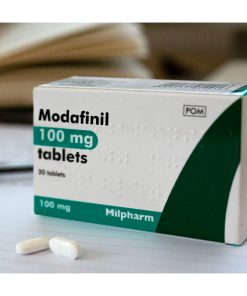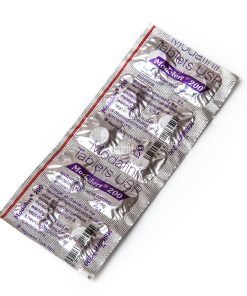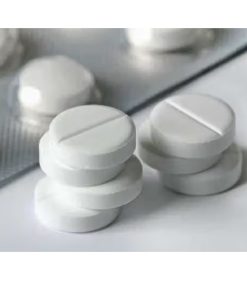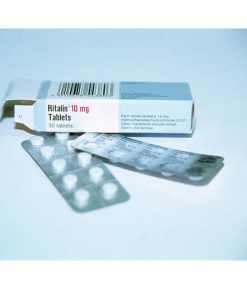ADHD
ADHD
ADHD
ADHD
ADHD
Buy Adderall to treat ADHD:
Amphetamine and dextroamphetamine are the two substances that make up the pharmaceutical stimulant Adderall. It is a member of the class of drugs known as stimulants. Treatment for attention deficit hyperactivity disorder (ADHD) is its most popular usage. Buy Adderall to treat ADHD.
What is ADHD?
Attention-deficit/hyperactivity disorder (ADHD) is a disorder that alters the way your brain functions. ADHD is not a sign of inattention, despite its moniker. It indicates that you have trouble focusing your attention on particular tasks or maintaining control over them. Symptoms of ADHD include impulsive behavior, difficulty focusing, and difficulty staying still. However, it also enables you to “get in the zone” and concentrate intensely on activities that you truly love.
About 10% of American children aged three to seventeen have been diagnosed with attention-deficit/hyperactivity disorder. Spend some time learning about the realities and beliefs surrounding ADHD in children.
ADHD Types
Four types of ADHD are recognized by medical specialists in both adults and children:
Inattentive ADHD: This entails having trouble concentrating, completing assignments, and maintaining organization. Hyperactive-Impulsive ADHD: This includes having trouble staying calm or finding “quiet time.” You are very talkative and full of enthusiasm. Additionally, you might behave without fully considering your actions and interrupt others. You might exhibit fewer overt difficulties with focus.
Combined Presentation: The majority of people connect ADHD with this form, which is the most prevalent. You show many indicators of being inattentive and hyperactive-impulsive.
Unspecified Presentation: This occurs when your symptoms are severe enough to interfere with your day-to-day activities, but they don’t fit the official criteria for the preceding categories. In this instance, the diagnosis given by the providers is “unspecified ADHD.”
ADHD Symptoms:
Each group has nine symptoms, which are explained below. Remember that many children also exhibit these habits. If your child occasionally engages in some of these behaviors, they may not have ADHD.
ADHD symptoms fall into two major categories:
Inattention symptoms:
You might observe your child:
- Avoids activities that call for prolonged concentration.
- Disregards details or commits seemingly thoughtless errors
- Easily distracted by events around them or occasionally by their thoughts,
- They neglect to finish assignments that are required of them. Struggles to maintain concentration when reading lengthy passages or listening to speeches.
- Loses essential items, such as schoolwork or spectacles.
- Appear preoccupied or to be daydreaming when someone is speaking to them directly.
- Begins a task with ease but becomes distracted and fails to finish it (this could influence things like performing their homework or housework).
Hyperactivity/Impulsivity symptoms
You might observe your child:
- Fidgets or makes little hand or foot motions, particularly when eating or working on homework.
- Rises when instructed to remain seated
- Finds it difficult to play or perform other chores in silence.
- Finds it tough to wait for their turn to act.
- With other people’s activities, such as interrupting a game that other children are playing or stealing an item without consent.
- Runs climbs, jumps, or becomes restless when they should remain still
- They appear to be constantly “on the go” or “powered by a motor.”
- Interrupts others or completes their phrases
- Talks more than you might think
ADHD Causes
ADHD is inherited. This suggests that your child has neurodivergence, or differences in brain development, due to specific gene changes that are present from birth. The genetic alterations that lead to ADHD are frequently inherited within biological families. It is common for children with ADHD to have siblings or biological parents who also have the disorder.
The effects of ADHD on the brain are still being studied by researchers. This is what we currently know. Your child’s brain’s frontal lobe is wired differently in ADHD, making it more difficult for them to use focused attention. Directed attention is the ability to focus on something that doesn’t strongly interest you.
However, compared to most neurotypical children, your child uses automatic attention better. However, your child’s use of automatic attention is superior to that of the majority of neurotypical children. We utilize this kind of attention when we want to concentrate on something that interests us. It makes it possible to “get in the zone” and work on a task for hours on end, a phenomenon known as hyperfocus. Your child may utilize hyperfocus to accomplish certain goals or to excel at a game or pastime.
Buy Ritalin to reduce the risk of ADHD. It functions by increasing concentration and decreasing impulsive actions. By encouraging wakefulness, it can also help treat narcolepsy.
Diagnosis and Tests
ADHD is diagnosed by medical professionals based on the existence or lack of specific symptoms. They make use of the DSM-5-TR criteria.
- At least six symptoms of either hyperactivity/impulsivity or inattention are present in your youngster. Or, for a total of twelve or more symptoms, they exhibit at least six symptoms from each group.
- Symptoms started before the age of twelve.
- At least two locations (such as home and school) experience symptoms.
- Your child’s friendships and everyday activities are disrupted by symptoms.
- These symptoms are not the result of another illness.
- Your child’s doctor might suggest one or more of the following if they have ADHD:
Treatment
Parental training. Therapists educate you on how to assist your child in modifying behaviors that are causing them problems and build on their strengths. For instance, you learn how to set up a schedule for your child, reward good behavior, and manage challenging behavior.
social skills group. Your youngster may benefit from social skills training groups. These programs typically meet once or twice a week for six to twelve weeks. In a monitored environment, your child learns new social skills.
Medications (Pharmacotherapy): ADHD drugs enhance your child’s capacity for focused attention, which in turn improves symptoms and, more significantly, their relationships and quality of life. Buy modafinil to treat ADHD because it has been proven to be beneficial in clinical trials. Second, because of the possibility of abuse, these agents are classified as restricted substances. Like stimulants, modafinil, which is marketed under the name Provigil, raises dopamine levels in the brain.






